How we travel
This is the beginning of a site on our travels in 41 countries over 43 years. We’re eager to share our experiences of sights, cultures, engaging people, history, and more. There will be about 15 more pages coming over the next months. They’ll be by topic. The next one is Cars, presenting our many adventures, challenges, and views on the use of cars.
Please note: The embedded images are invisibly watermarked. I’m happy to share them if you want to use them personally. If you want to use any of them commercially, please contact me.
The viewable content here uses small images. You can see higher-res images, commonly at 2560 pixels on the long dimension, just by clicking on the small images. [This feature is being implemented piecewise; only a few images are linked, currently.]
Quick story, before some details… well, maybe not that quick
… then we recount how we got the bug for a trip and how we prepared the whole trip
We travel for the flow of experiences, variously deep to exhilarating, of new lands, new cultures, new friends, new art, new pieces of history recent and ancient. We travel for being on our own, making our way in a world that is refreshingly foreign to us, yet filled with the common humanity we always find.
We travel on our own. One group tour made us certain that such is not for us, ever. Planning our own trip, carrying it out in real time takes us to people we want to meet and places we want to see… and it’s an endless thrill, kind of edgy more than once (or thirty times). We can stop where there’s an unusual flower, and then another and another, or watch that elephant kicking up bunches of grass and deftly eating them, or talking to a waiter about his life. At the same time, we’ve been led to great trips by meeting people in varied walks of life – visiting students and scientists, friends of friends of friends, and all that. We seek them out and they reward us with ideas and even direct links – “You must meet my grandmother, Mama Sikinan; she’s does bush medicine,” and so we did to great surprise elaborated elsewhere.
Captions: SR – David triggering some trigger plants in the Stirling Range, Western Australia; EF – Big elephant feeding by kicking up grass clumps, Tsavo West National Park, Kenya; WM – Waiter at Bistro Vučnica in Mukinje, Croatia, near Plitvice Lakes; DM – David as a 3-1/2 -month-old with Mama Sikinan in Magadi, Kenya
Our focus here is on international travel. We’ve done lots of domestic travel inside the US, in all states except Alaska (so far), but international travel is less indulged in by Americans than by people of other nations, so we feel it may be useful to impart the flavor of being abroad.
We’ve seen the classic sights, from Notre Dame cathedral to lions in Masai Mara, to the Mt. Hagen highway in Papua New Guinea, to Ta Prohm by Angkor Wat, to the Galapagos, to Machu Picchu with its dramatic Amarra del Sol. to the bell tower in Xi’An, China.
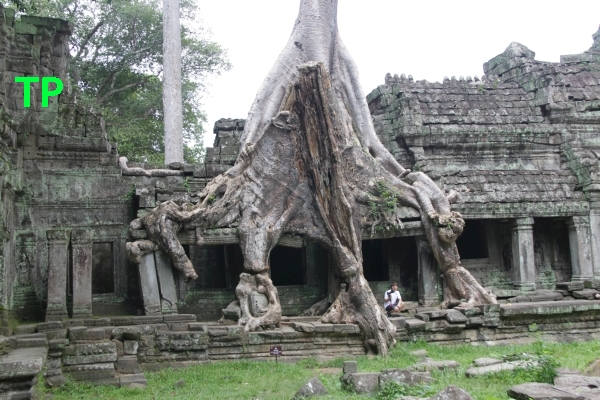
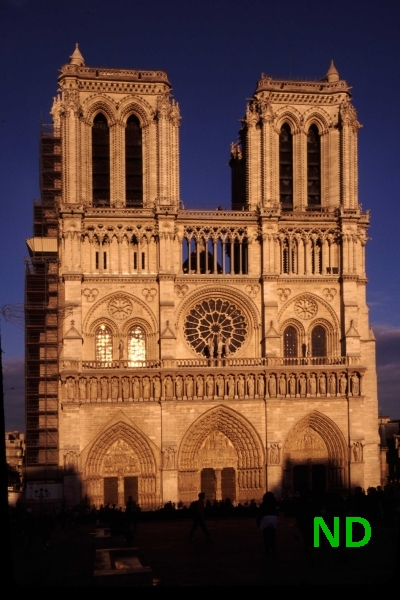
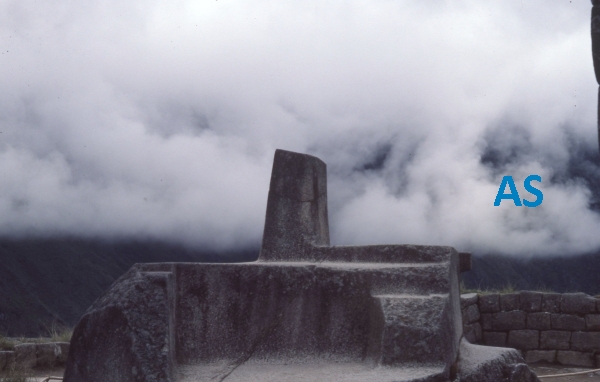
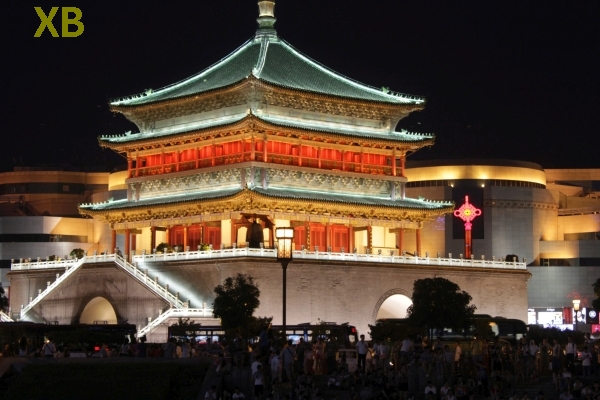
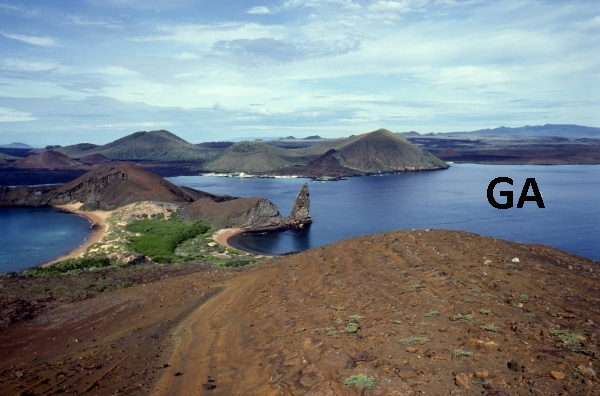
Captions: ND – Notre Dame cathedral in Paris,; TP – Trees overgrowing Ta Prohm in the complex near Angkor Wat, Cambodia; GA – Looking down on Bartolome Pinnacle on Isla Bartolome, the Galapagos; AS – The Amarra del Sol, hitching post of the sun, Machu Picchu, Peru; XB – The Bell Tower in Xi’An, China
We’ve also been in places so out of the way as to give a thrill of the exotica, from Maun, Botswana to sleeping in a Maasai enkaji to a divination ceremony with a pig’s liver up the river in Borneo. We’ve met the most interesting and most generous people, from a pedicab driver in Kota Bahru, mainland Malaysia to a bullet train driver to break dancers in Montpellier, France to famous researchers in Madagascar to Belgian emigres in the Galapagos. We’ve conversed in English, French, German, Spanish, and some Bahasa Indonesia, Japanese, and Papuan pidgin. On a flight from Kenya to Zurich Vince sat next to an engaging middle-aged man who, on leaving, gave him his card – Kip Keino, the famous marathoner.



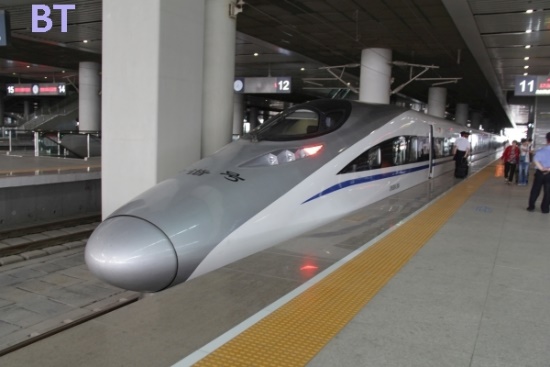

Captions: DV – Divination ceremony at a Dyak longhouse upriver from Sarikei, Sarawak, Malaysia; PC – Pedicab driver with us in Johor Bahru, Malaysia; BD – Break dancers on the Comedie, Montpellier, France; ME – Lou Ellen in a Maasai enkaji, our home for the night, Ngong Hills, Kenya; BT – Bullet train in Zhengzhou, China
Forty different modes of transport has taken us from point A to point B – our two feet (or four or six in our combos), tuk-tuks (Bangkok, below), cable cars, Land Rovers (not to be envied, we found), four-seater planes, mokoros (shallow-draft canoes; Okavango Delta, Botswana, below), parasails (Lake Annecy, France, below), … We’ve given rides to young people and old in Kenya, Cameroon, Botswana; we’ve had the favor returned in the Netherlands, France, Australia. We’d do it all again, and are doing it.

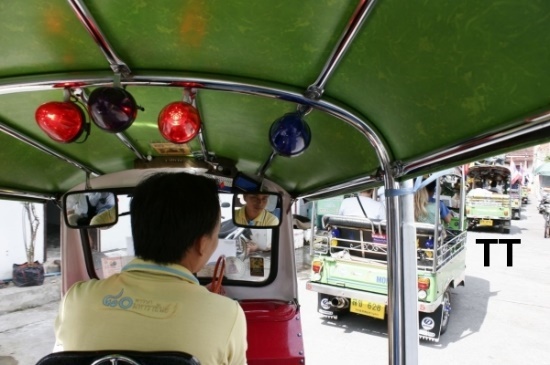

We’ve discovered stunning-to-daunting places to stay – homestays in Viet Nam (yes, it’s two words), warm chambres d’hotes in France, mountain huts, [10]Maasai enkajis, five-room suites in Luoyang for a virtual song – and equally amazing hosts
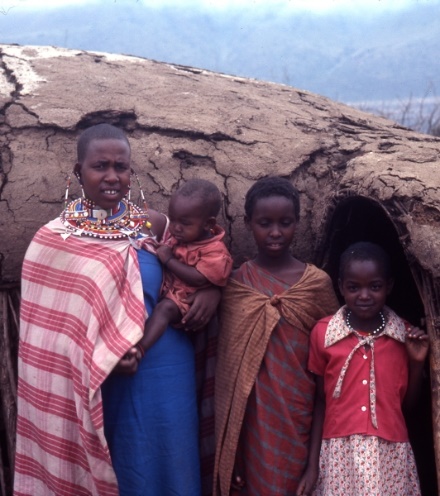
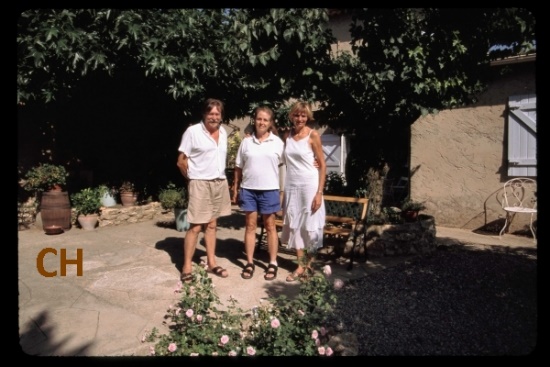
Art surrounded us in Bali, in Marrakech, in Papua New Guinea, in Kenya, in Haida Gwaii, in Australia. We came back with memorable pieces and with memories of many more – the Louvre, the Musee Guimet of Asian art in Paris(MG; David and friend on a bench), the Dahlem Museum in Berlin (DM; the pre-Columbian statue), the aboriginal exhibition in Canberra, Australia, the [Folk Art Museum in Tokyo (FS; artist Fujita-san doing exquisite repoussé),cozy, smaller museums and ateliers in Croatia, Madagascar, Vancouver, and more. Art is everywhere in Japan, in storefronts (JA). There’s also living art in performance – we were so moved by the Kecak dance KD) done by torchlight by a women’s troupe in Ubud, Bali.




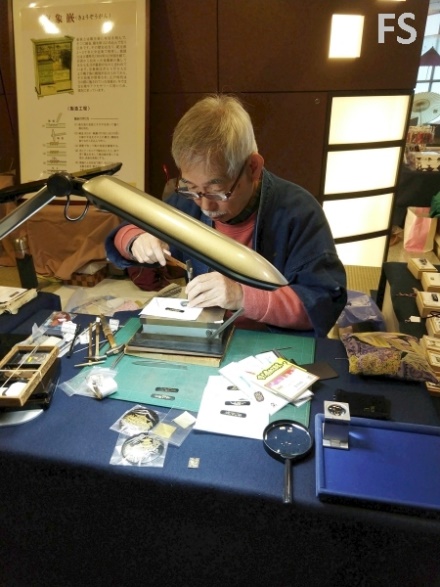
We’ve been wrapped in serene, golden sunsets in Hawaii, purple sunsets in Madagascar traversed by a classic prahu (PR), puffy, mountain-swaddling clouds in Viet Nam, caught there also in exhilarating cold rain. We’ve looked over the sensuous hills of Tam Son in Viet Nam (TS), the grasslands of Tsavo West (TW; from the popped top of our rented Land Rover), the snows on Mt. Kenya.


We set out in 1977 to see the wild animals and plants of Kenya and saw much more. Cruising slowly by car, camping, or boating we’ve seen right by us lions, elephants, crocodiles, Cape buffalo, elegant impalas and waterbucks (WB), gaudy and chatty perching birds, flamingos parading and taking off, a rarely seen long-legged serval cat, giant senecio trees (GS; cabbages!), Nandi flame trees, but also hyraxes (HY;closest living relatives of the elephant!), eagle owls. Elephants have surrounded us, peacefully. Lions have roared near our tent, and elephants left footprints carefully around our tent.




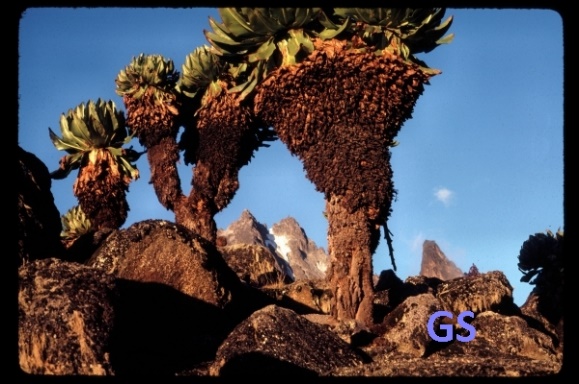


In Madagscar we were entranced by lemurs, chameleons, flame-red aloes, and much more.


Australia gave us towering kauri trees (Lou Ellen and David are climbing the Gloucester tree), crimson rosella parrots in Canberra braving winter frost and summer heat, fairy penguins, funky grass trees, great groups of cycads, flying duck orchids, curly Banksia flowers, trigger plants, enamel orchids…. which are on the most infertile soils of Western Australia but part of an ecosystem more diverse than Amazonia; there are at least 8,000 species of wildflowers in Western Australia alone!



Puerto Rico gave us the bioluminescent dinoflagellates (hard to get a picture!).
Other sights and experiences challenge being categorized – the humor of a wrinkly-faced dog in a café in Fougeres, France; the solid gold Buddha at Wat Traimit in Bangkok, encountering a haughty camel pulling a cotton transport in India.



Yes, we’re scientists and science has been the occasion for some of our travels – meetings and work stays of weeks to months. It has also been an illuminator of our travels. We see the beautiful complexity of nature, with some deeper knowledge of the layers of wonder from biochemical to ecological. We also have to see, sadly, the diversity of fellow inhabitants before it all disappears – elephants, lions, rainforests, coral reefs. There’s a small chance we can add to the awareness of others and catalyze some critically needed actions.
We have the great fortune to have a son who has not only been a joy to live with but an equally ardent traveler. Being breast-fed he was eminently portable, as we took him on a two-part world venture at [18]age 4 months. He was a happy center of attention in child-centric cultures – Malaysia, Kenya, for two. He enjoyed and recalled travel experiences. At age 8 we asked him where he’d like us all to go that summer. His first three choices were “Madagascar, Madagascar, Madagascar,” and so we heartily agreed. He grew into a gracious leader and organizer – he and his wife, Yi, shown here on the Ginza in Tokyo knew how to get around on every transport in Japan, what times everything was happening.


We’ve been millionaires in Jordan and Indonesia, watching the exchange rate and admiring the beauty of coins and [20]colorful banknotes around the world, also silently applauding the nations’ choices of poets, farmers, intellectuals, workers over the unbroken run of politicians on US banknotes.

We’ve had glorious lunches with bread, brie, and wine, a number in spectacular settings (St. Jean de Bueges, southern France, SJ). We’ve had basic meals of foo-foo cooked on a dirt floor, sumptuous meals with seafood and champagne hosted by friends, truly unusual bushmeat, our own mountain camping food, meals to die for in little restaurants. We’re been given a football-sized avocado by woman farmer Lydia Namanga (LM) in Cameroon. We discovered Arabic breakfasts and Vince now has one every other day. Friends, and families of friends, treated us to dinners, some with great ceremony, as in Xi’An, China.
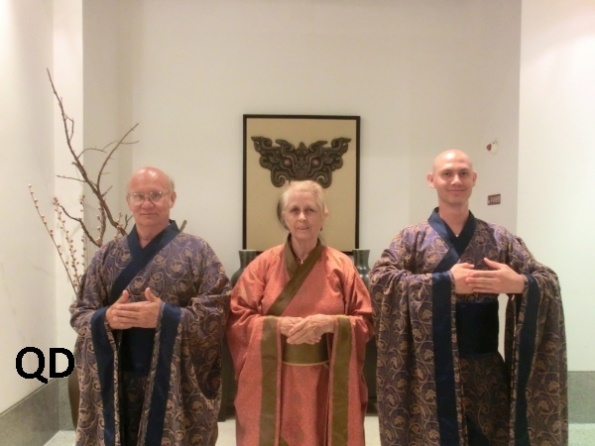

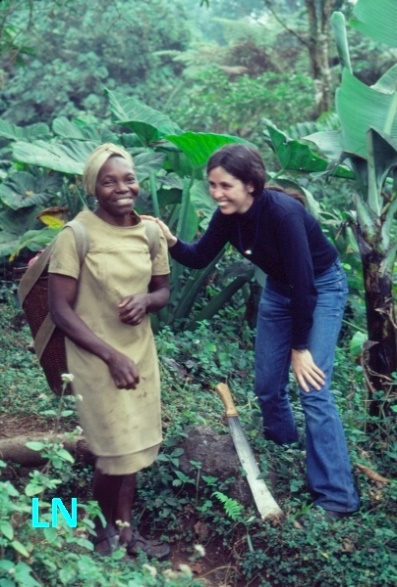
We’ve been in the local economy and in the local personal and cultural life. We’ve bargained with a man in arse grass in Mt. Hagen, been part of a young couple’s Hindu ceremony in Bali and a divination ceremony (DV) for a young Dyak man in Borneo, been taken into the black residential area in Bulawayo on a different planet from the white world there. David and Yi (KI) joined the throngs of young people at the Senso-ji temple celebrating their coming of age in beautiful kimonos. The weekly markets in the remote areas are a “trip” – selling water buffalo in Rantepao (RM), Sulawesi or almost anything at Bac Ha (BH) in Viet Nam or the souks of Marrakech every day.
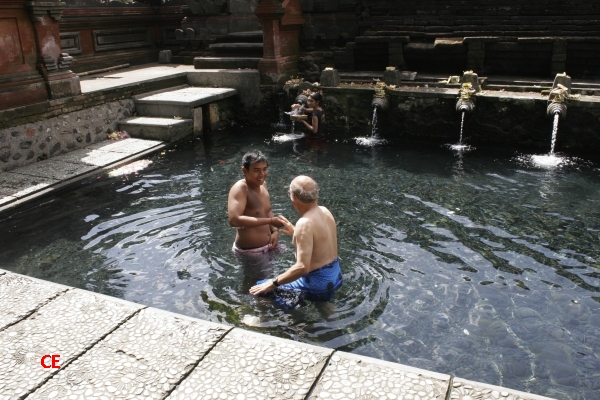
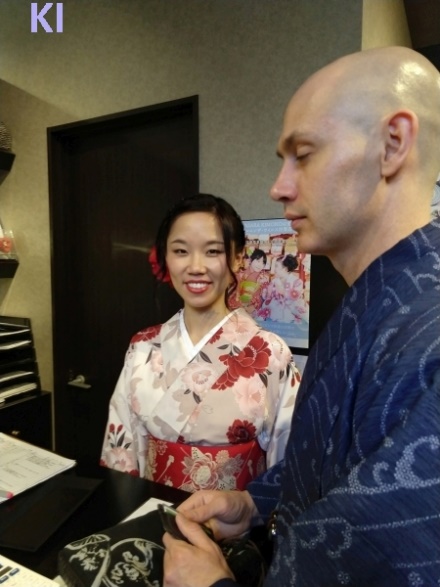
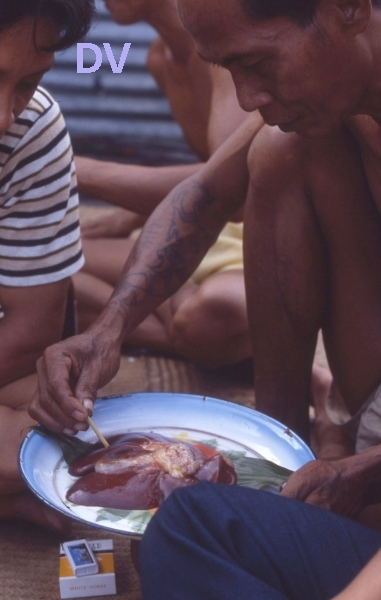
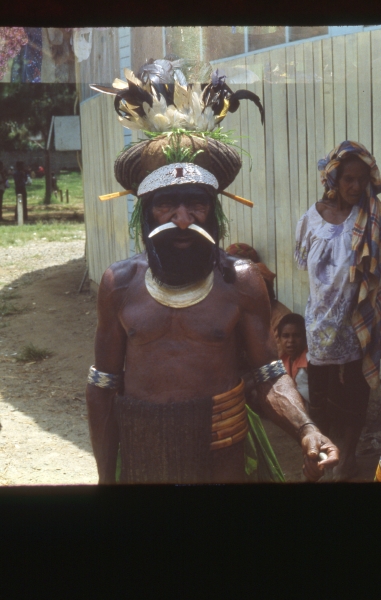
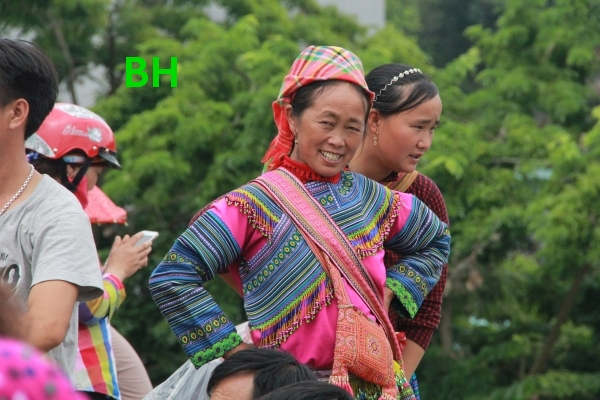

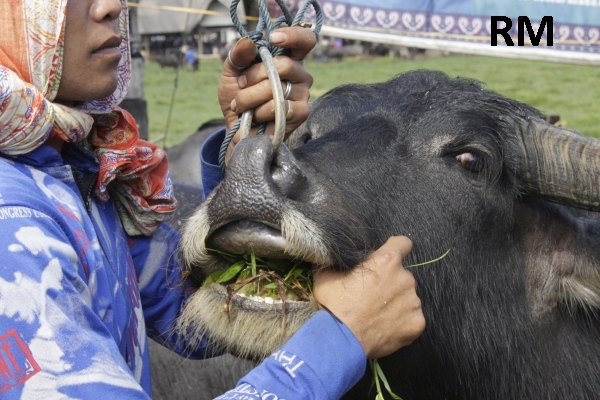
We’ve been accepted graciously and exuberantly in places where American political and military actions have been appalling. The people of Viet Nam were warm from the start and rapidly became friends (HA). One Viet veteran (VS) invited us into his house just to talk with Americans. In Jordan, where 88% of the people disagreed with American policy toward Palestinians, people would ask us, “Where are you from?” We’d answer – as if it were not obvious, “America.” They would reply, “Welcome to Jordan.” We reciprocated with warm interactions there, and in China and many Muslim countries.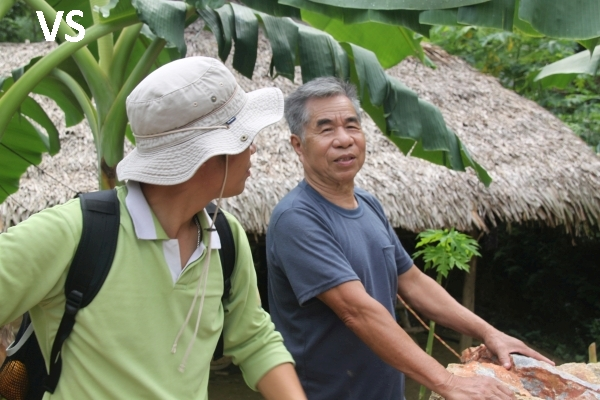
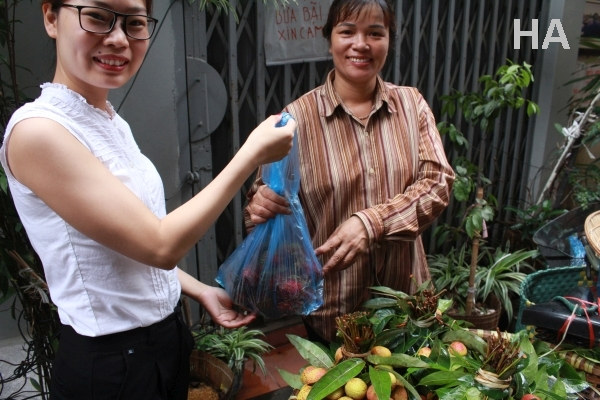
We’ve seen what local people live through. People are tough and resourceful. They put up with drudgery, PLOWING IN VIETNAM sadness, poverty (dying cattle in Kenya near Mt. Meru), all the human conditions that are real to us if not to economists (a generally dirty word to us). We’ve also seen people radiant with joy 3 GIRLS IN KIMONOS. Our travels have value beyond gratifying our desires for experiences. We are able to spread goodwill person-to-person. We are also lifelong teachers from days in graduate school through the present. We teach the wonders, the cultures, the issues.
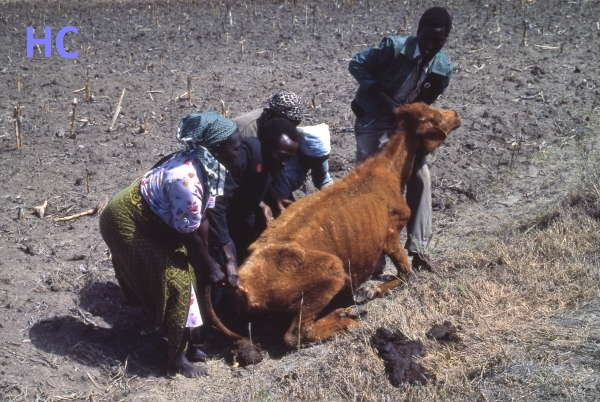
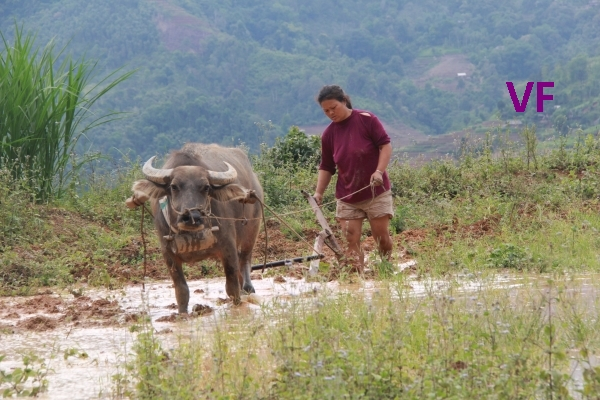
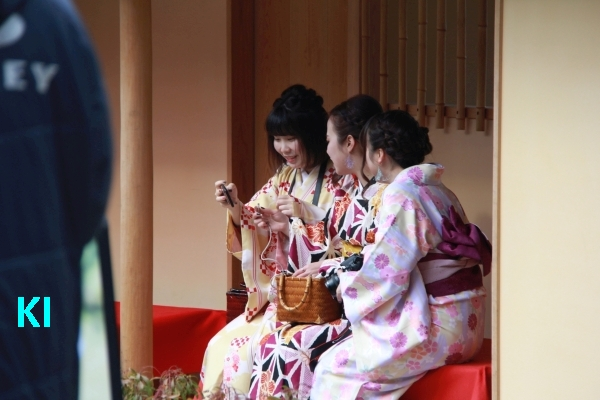 We’re not Raiders of the Lost Ark. We don’t seek danger for thrills. Dangers were so few – driving unwittingly into a game poachers’ camp in Zimbabwe, having our plane nearly catch a wing landing in Chiang Rai, Vince unknowingly berating the US ambassador and his Peruvian general host for bringing a disruptive helicopter to ghostly Machu Picchu, being driven at high speed on a slippery road by a young and hungover Dyak man in Borneo. We’ve never been mugged, though Lou Ellen had her pocket slit by a clever young pickpocket in Antananarivo, Madagascar (ZM; that’s our David to the left, not the pickpocket!). Diseases faced us – malaria, schistosomiasis, Naeglaria,… but Vince was only sick three times, once with common 24-hour flu, once with brief GI upset from too much yoghurt with new fermenters, and once from an antimalarial medication (cured with yoghurt!).
We’re not Raiders of the Lost Ark. We don’t seek danger for thrills. Dangers were so few – driving unwittingly into a game poachers’ camp in Zimbabwe, having our plane nearly catch a wing landing in Chiang Rai, Vince unknowingly berating the US ambassador and his Peruvian general host for bringing a disruptive helicopter to ghostly Machu Picchu, being driven at high speed on a slippery road by a young and hungover Dyak man in Borneo. We’ve never been mugged, though Lou Ellen had her pocket slit by a clever young pickpocket in Antananarivo, Madagascar (ZM; that’s our David to the left, not the pickpocket!). Diseases faced us – malaria, schistosomiasis, Naeglaria,… but Vince was only sick three times, once with common 24-hour flu, once with brief GI upset from too much yoghurt with new fermenters, and once from an antimalarial medication (cured with yoghurt!).
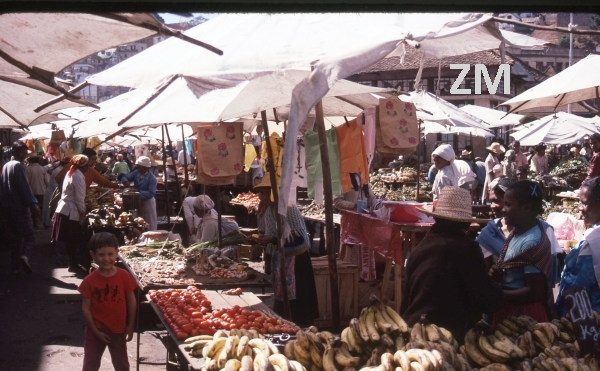
We’ve lived beyond the actual trips in books we read, and we’ve relived the experiences with our friends in stories, images, and art.
Here are some pieces, below. These are distilled from the longer stories we’re putting up as some twenty stories or articles.
We have a wealth of images, digital and scanned (many more still to go!). You will be able, once we have the content all up, to take virtual trips through them from the main menu on this home page, by country, and linked by topic from the individual articles.
Next part: just how do we create a trip?
How we get the bug for a place
Easy enough! We’ve been curious about the world – from our readings and viewings as children; from our long-felt goals of being part of a bigger world, especially in science; from direct contact with nature, Lou Ellen on a farm, Vince from family trips and Boy Scout ventures and merit badge studies.
We read interesting books that have been filling (overfilling) our house for decades. Some are travelogues themselves, but not by dilettantes, rather by serious people on adventures for science, culture, political geography. Alfred Russell Wallace wrote the story of evolution in his book, The Malay Archipelago (MP), filled with episodes of tribulations and exultations in travels with people from pirates to headhunters and more. The University of California Press did a follow-up, Archipelago, which we value as the single most beautiful book produced. Not first seen by us as a book was the set of many stories by the Blair brothers in the area in the 1980s, Ring of Fire. Toss in the Lonely Planet guides we have for 30 countries, the books on ways of life in cultures still hanging on, such as Cedar by HilaryStewart, the sweeping portrayal of pan-Asian politics in The Scrutable East, by journalist Robert Trumbull (which, if politics had grasped it, would have avoided Viet Nam and other disastrous incursions). We’ve put together a short list of selections among our 500 or 600 travel books, with an active link.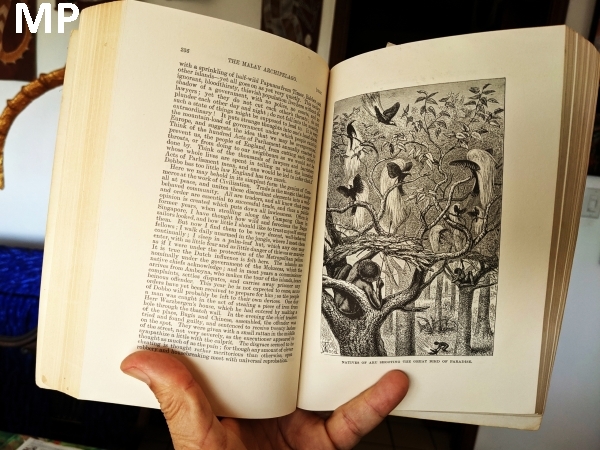
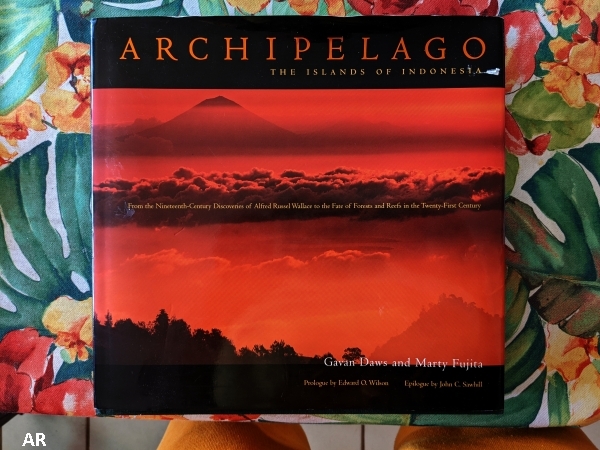
We look at maps and atlases. Lou Ellen acceded to Vince’s wish to have the very expensive and luxuriant [29]The Times Atlas of the World; he could lose himself for hours in looking at exotic areas. Even while on a trip another trip would suggest itself. An airline magazine showed the routes over Africa; our fingers can trace over remote regions such as Bangui – that transports us to the mindset of Dr. Livingstone. Vince traced the route of Edmond O’Hanlon and James Fenton into the remotest parts of Borneo; the rainforests we’ve experienced expanded a hundredfold in impact. Reading Sahara by Marc de Villiers and Sheila Hirtle expanded the efforts and rewards we’ve had another hundredfold.
We talk to friends and colleagues, esp. those who lived there or are from there by origin. Before his first overseas trip to Kenya, Vince had planned to join a Sierra Club group. Luckily, he met Jim Beverwyk and Mary Parsaca, who had lived there as Peace Corps volunteers, even having their children Mara and Tana born there. “Yes, go, but don’t go with a group. Get there, to the Thorn Tree Café at Kenyatta Boulevard and Kimathi Street. Put up a note, asking people to share expenses.”
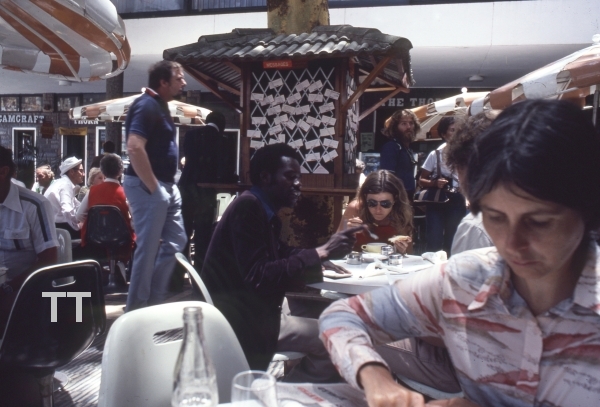
He did. He rented a van, and, after one somewhat worrisome day about the expense of paying all the van rental, he had three fellow travelers through the game parks of Amboseli, Tsavo, Samburu, and Nakuru, great bantering conversation, worries about lions around the tents, buying produce from tiny shops of the locals. Two and a half years later, Lou Ellen and Vince were married and had hearts set on Kenya. They found, some roundabout way (so readily done in Los Alamos) a Kiswahili teacher. Wairimu Bowman was an Mkikuyu from the highlands, married to a physicist. (The picture below is of her sister-in-law, also named Wairimu) in Othaya, Kenya. Over six patient months she taught us Kiswahili. Somehow also the word got out about our going to Kenya. “Say, there’s a young Maasai student at Santa Fe Prep.” This led to meeting him and his urging us to meet his grandmother. “She’s does bush medicine.” And this turned out to include open-air surgery! Alas, there was no chance to grab a photo, only an amazing memory.
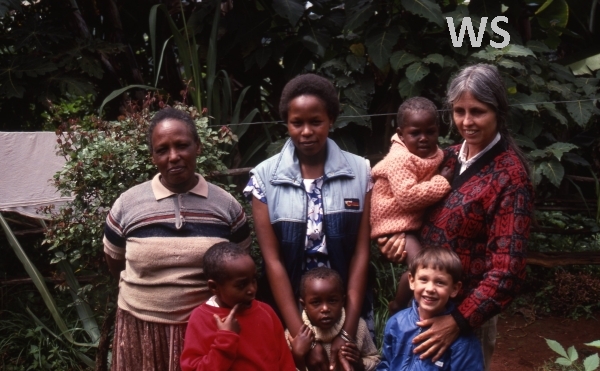
Wairimu is at left; her daughter and three kids are there, along with Lou Ellen and 5-year-old David.
We talk to people where we find ourselves. In Darwin, Australia, we meet ecologists David Williams and Margaret. Within a day we had lilos (floats) they loaned us and were on our way to splendid Twin Falls (splendid even if dry). In New Zealand we took up the offer of Warwick and Jan Silvester to stay with them. They seriously augmented our camping supplies and also our itinerary around this beautiful country.
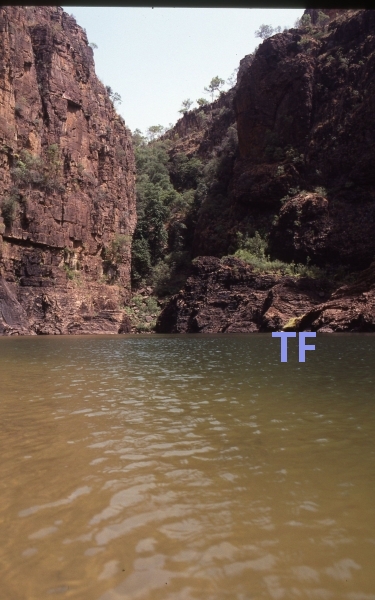
In a few months, we’ve acquired a real feel for the country or countries. We’re replete with travel and nature guidebooks, local maps, airline schedules, names of people and places, correspondence. A most pleasant first half of the trip has transpired. We’re itching to go. We have a wish list of what we hope to do and see and steep ourselves in. We’re eager to:
- Meet people in cultures new to us; speak words to volumes in a language
- Have the feeling of being off local support, needing our wits rather often – a feeling celebrated by the great, humorous, and insightful travel author, Bill Bryson;
- Be in new landscapes, in wild nature, in fascinating, urbane cities and little villages;
- Settle into intimate little hotels, inns, chambres d’hotes, to feel cozy and to talk with the people who have their lives invested there;
- See art and crafts indigenous to the area, whether that of Turkana basketmakers, urban aboriginal painters, Japanese lacquer artists, or Greek ceramicists. We always bring some back. Our house is a mini-museum.
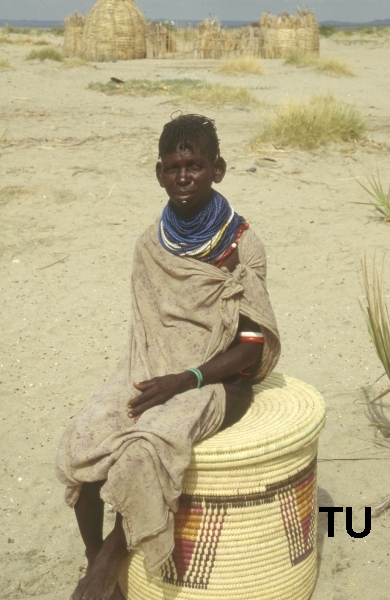

- There are the headiest experiences of museums and art galleries great to small. Lou Ellen and I walked through the vast Village Arts emporium in Port Moresby, Papua New Guinea, separately, yet found that 7 of the 10 objects we each chose were the same! There are lesser-know venues not to be missed. Coming to mind are the Musee Guimet of Asian art in Paris and the Tokyo Crafts Museum, a living artists’s workshop and displays of handiwork finer than one ever imagined (that’s Fujita-san at work on repousse’);
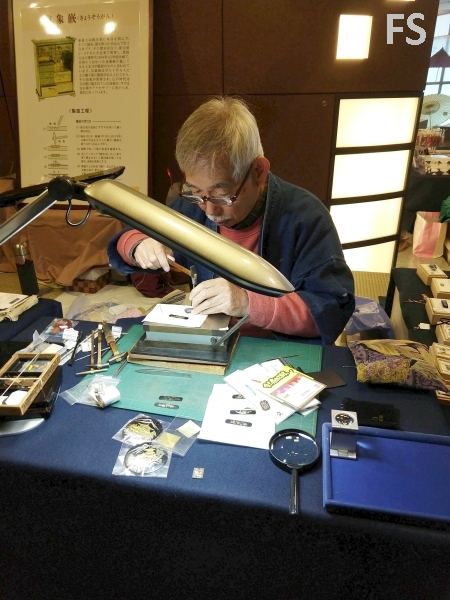
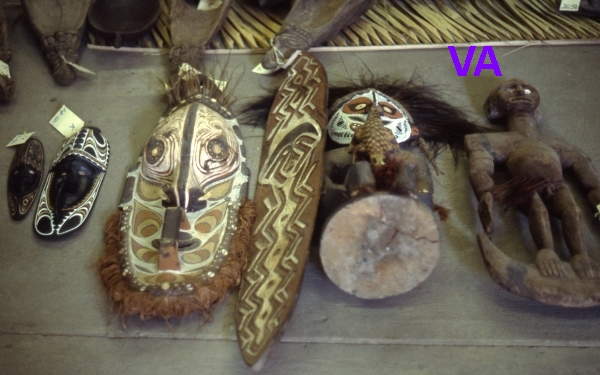

- Engrave memories in photographs, that range from simple records of a place or a time to images that recall themselves in our consciousness year after year – our Da’y (“dzai”)host, Phuong in Viet Nam holding her daughter, that timeless scene of a prahu sailing before the wind with the purple sky of a sunset, that elephant sharing space with us, having moved to within two steps of us, that exotic skyscraper in Guangzhou like no other;
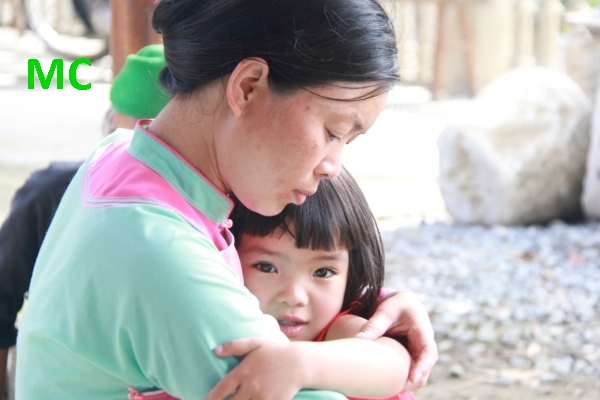

- The exchange of gifts, physical and, more so, in conversations – at a dinner table or on a train – and in intermeshing of daily life – time with Giorgos and Eleni at home in Athens and visiting Meteora with its monasteries on rocky cliffs, amusing stories with Gilles Regazzoni of Gilles de Roi.
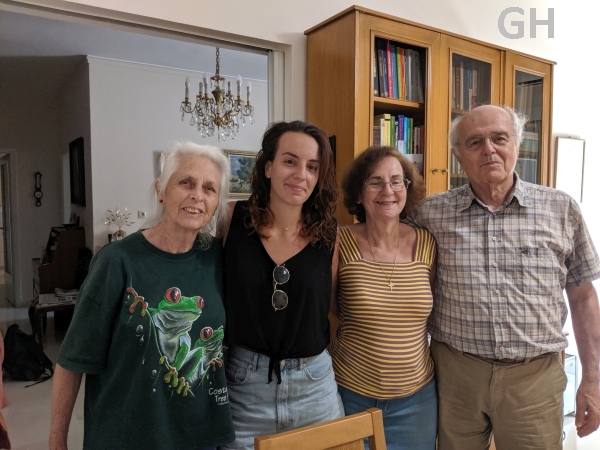
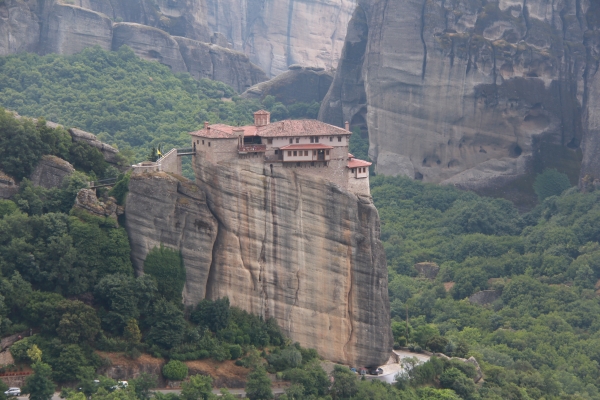
Preparing
In the large: we merge our household financial management with saving for trips. We are frugal and pleased with simpler clothes, long-lived cars (only two ever bought new), and forgoing restaurants, by and large, for our own cooking of cuisines we’ve learned to enjoy from diverse cultures. We also are both very capable of doing home repairs, electrical wiring, all electronics, and such, from our families and from long experience as adults, including in the sciences. Our splurges are travel, art, and books. We’ve been fortunate in the places we started in life with financially prudent and supportive families and then with hard-won (and fun) careers in science.
For the itinerary – half the fun is the prep, and the dreams of who, what, when, where; the “why” is. Once we’ve picked a place, it’s a sine qua non to find out if we need visas and how long in advance we need to apply. We take passport photos and print them. It’s time to learn some of the customs – turn to a source such as Culture Shock (name of country; for France, below, CS). It’s time, too, to learn some of the language. Vince takes a few months to learn greetings, directions, counting, and sometimes a lot more. He reads comic books in French to brush up on idioms if we’re going to a francophone country. He spent a lot of time on Bahasa Indonesia, which led to some good conversations. It’s time to correspond with friends and helpful contacts. When we started that was with the featherweight airmail envelopes with their exotic feel, with the frisson of getting each reply. Now it’s email, sometimes phone. Phone was the only way to book a trip to le font de Gaume in the Perigord, a little cave like Lascaux but still open to visitors, only 6 at a time with a guide having only a flashlight (the picture below, FG, is from Lascaux). Halfway to Viet Nam in 2017 we had to clarify a hotel reservation there. Phoning from an airline club (admission courtesy of our son and his wife for garnering freebies) made us feel as ultimate world travelers. We’re really closer to WTs, which translates as the same words but involves people who show up on your doorstep and say, “Bob from Bamenda said I could stay with you.” You don’t know which Bob and haven’t yet been to Bamenda.
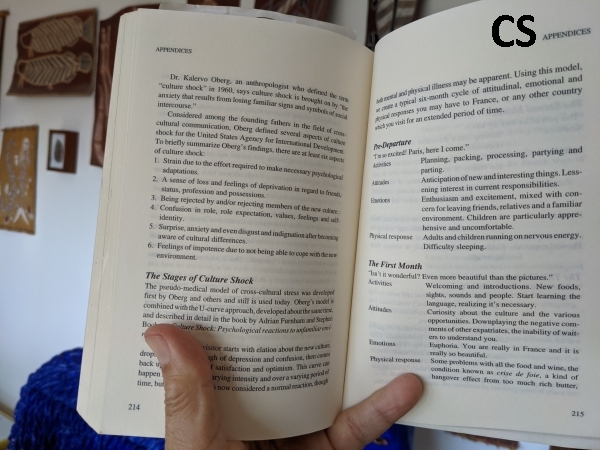
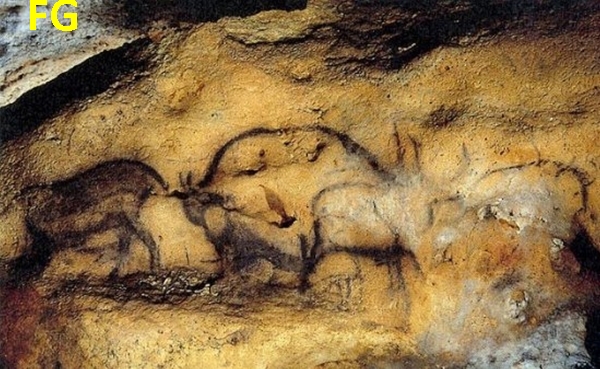
The CDC site tells us if we need immunization, preventive meds as for malaria, and precautions about water, food, etc. The State Department tells us of political dangers. These are almost all overblown. Civil unrest targets the contesting sides, once in a thousand times a visitor. We negotiated roadblocks against rebels in Zimbabwe (we didn’t dare take a photo, but the roads are deserted – 3 cars in 300 km!), and checkpoints manned by 14year-olds with AK-47s in Peru, but with only a brief anxiety. OK, load up on some antibiotic and antifungal creams, antimalarials, some first aid items. Btw, the threat of malaria is also commonly overdone. In 2017 we traveled in Viet Nam, dutifully taking doxycycline (far from ideal, as it clears out your beneficial gut bacteria) until we (1) saw only 6 mosquitos the whole trip and (2) were told that malaria had been eliminated in all the areas we traveled.
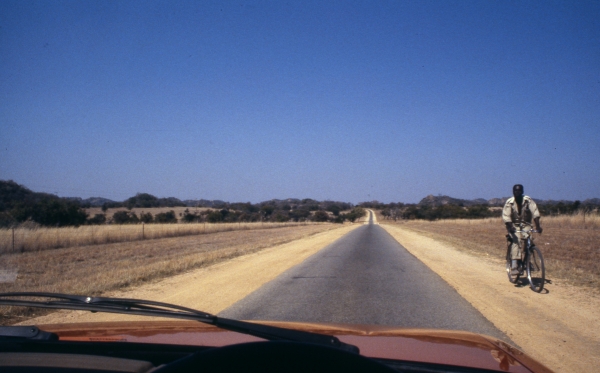
We turn to our maps and guidebooks in earnest, piecing together likely paths among all the rewarding places. We figure out the travel times and the time we’ll stay at each place, leaving space for changes. Let’s book the first night and wing it from there as we see fit. Of course, if there’s a celebration at one city or a museum only open on certain days we plan to be there and keep it in our diaries. Is there a flight or a bus or a train on these days? Do we arrive on a bank holiday, which can make getting local currency a bit tricky?
Then we get serious about booking flights. In the bad old days that meant seeing a travel agent (first few years), or getting a copy of the Official Airline Guide, and nowadays going online on airline sites. We’ll plot a set of alternative connections and see which one has a reasonable cost and no bad connecting times. In London that means you want at least two hours to negotiate the Tube, long lines, highway construction, and strikes. We had anxiety about short connections in June, 2019 until we arrived in Dubrovnik via El Paso – DFW – Des Moines – Pittsburgh with connections as short as 27 minutes for the only flight each week. In modern times the plane reservations are electronic. There’s no need to paranoically hold the plane tickets close to one’s chest, though it did have a real traveler’s feeling to it.
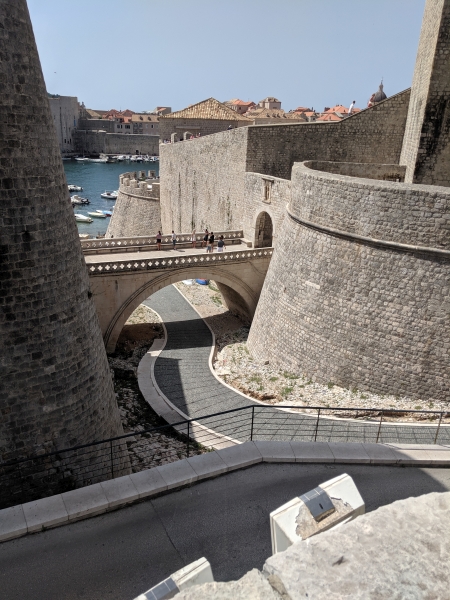
Now on to ground transport. Get the train, not the $300 taxi from Narita airport to Tokyo. Are there metro and rail passes? Get the contacts for booking transport after arriving in the country (bus lines are great in Croatia; a phone is your passport).
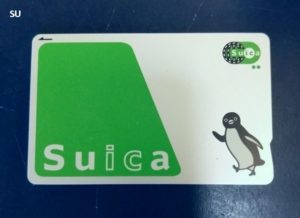
Whenever it’s possible we rent a car to travel on our own. We’ve done so in 23 countries on all the continents except Antarctica, countries driving on the left or driving on the right. It’s quite easy to get used to driving on the left. It’s crossing traffic as a pedestrian that gets dicey; one is often looking the wrong way for traffic, and the four streets together in Nairobi we really had to be aware. You need to get comfortable with rules of the road, traffic etiquette (what does a blinker on the left on a slow truck in Kenya mean, vs. a blinker on the right?), and a few precautions. Be sure you know the international road signs (easy) and, more so, where the route markers and street signs are – e.g., on houses and building in San Jose, Costa Rica.
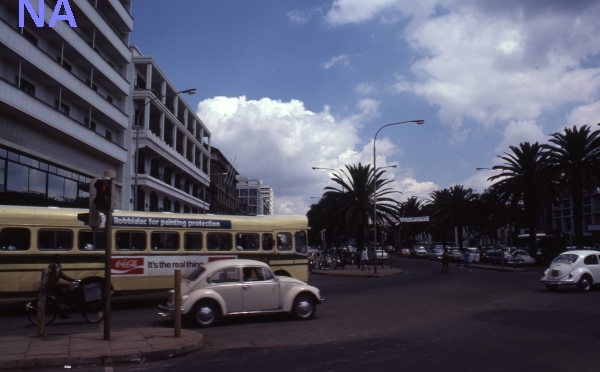
Again, overblowing the dangers is rife in travel guides. Costa Rica is often cited as dangerous, but drivers are quite nice; you just have to be aware that there are deep drainage ditches at the side of the road that you really don’t want to put a wheel in. There are countries in which we didn’t drive. Friends took us around in the Netherlands, Japan, China, England, and Botswana and in places we also drove ourselves, such as Greece. Extra benefits included festive meals with those friends. Here we enjoy a 12-course meal at a culinary school near Zhengzhou in China as Yi’s father, Jun, and a driver drive us to Yi’s hometown of Dancheng.
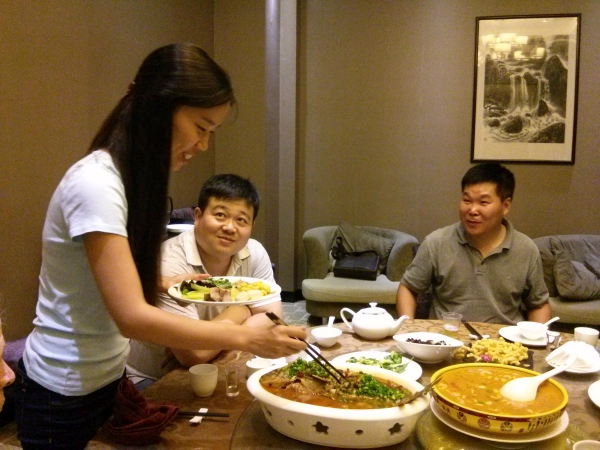
In Croatia all our dalliances were compact locations, Dubrovnik, Split, Plitvice Lakes, Zagreb, so comfy and fast buses were the way to go. In Madagascar we had a driver, Leva, in a Land Cruiser. There is or was pavement on only 150 miles and no road whatsoever across the center. Leva could read the path across the sandplain heath. Ditto for Viet Nam and Sulawesi, Indonesia, where we would have no clue of directions or signage. Those drives were magnificent.
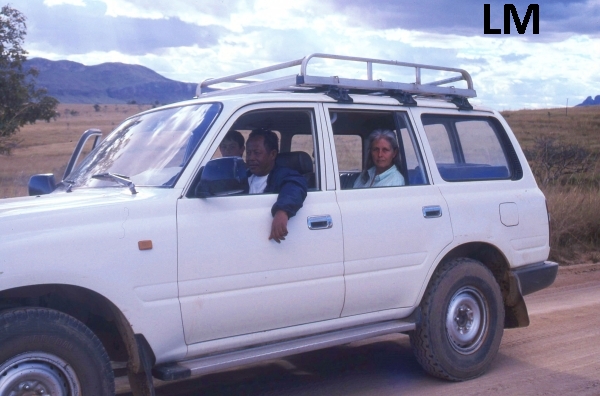
Step one may be getting an International Drivers License, from your local AAA. We only really had to show one on two occasions. Most countries accept a US or other nation’s domestic license. Find a rental agency. Our first one overseas was Hertz Nairobi. Yes, Hertz. Vince rented a van on his first trip and, later on that trip, a tiny Datsun B210 – better than a Land Rover, in so many ways, especially because 3 or 4 people can lift it out of ruts, mud, and sand pits… and did. We rented a Land Rover once, which is enough. Lou Ellen said of the 1980 version we had that it’s like a bad marriage; you’re always fixing it up, sometimes in rather worrisome circumstances. You need to check the condition of the vehicle and its safety equipment. Ask for seat belts, which aren’t always provided in some countries, while in others with dicey vehicles a citation for not using them is a moneymaker for the police – $300 in Botswana. Write down and/or put on your phone the emergency contact numbers for the agency and for public emergency services. We only had to call about a modest car problem twice. Agencies are cautious, themselves. In Kenya we planned to drive to the wild north to Marsabit and Lake Turkana. The agent turned as white as a black man can. “Don’t go by yourselves! We’ll provide a driver…” Good call on their part. Aside from the rare bandits was the reality of having, say, 3 flat tires in a stretch of 150 miles between tiny service stations. We’d need to wait, hours or a day for a passing truck to give us a lift to one of the service stations and a repeat of that to get back to the car. We flew to [51]Loiyangalani instead, a magical flight of its own.
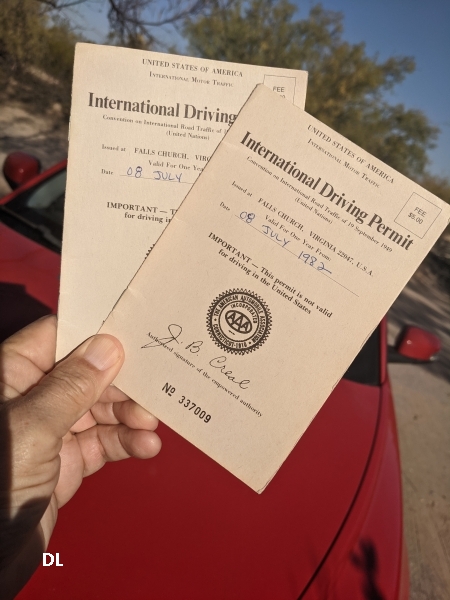
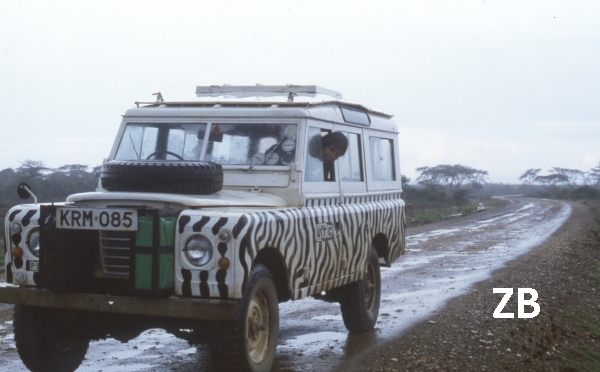
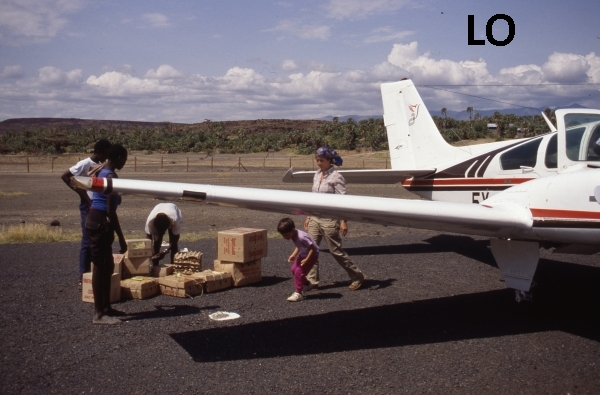
On the road you quickly learn the driving styles of the natives. Many French drivers in cities have two speeds, stopped and floored. Italians are tailgating maniacs, but mostly in narrow tunnels. Kenya has been the greatest driving experience of our lives. The freedom of having nice roads, [52]windows open to the voices of the women walking to market (yet some are overburdened), landscapes in which you feel yourself to be a part, essentially a time of excitement at being in a place of wonder yet with a feeling of comfort. We can still hear the voices, see the hills, the live earth at the roadside, smell the air while not forgetting some diesel truck fumes; those are part of the reality.
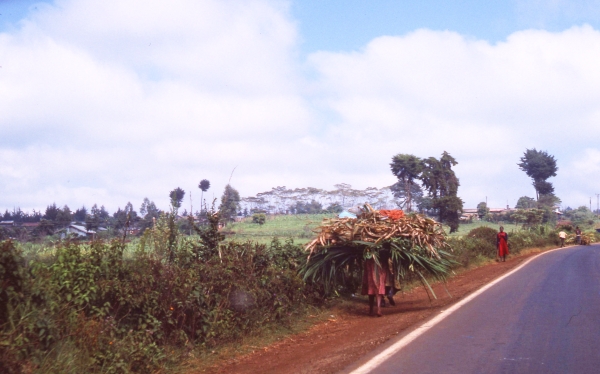
Today a cell phone is your handy lifeline. We’ve never had to use it for emergencies. Rather, it’s your way to be sure you meet your friends – or even your family arriving in Beijing on a different flight. It was our way to arrange transport and lodging and more as we wandered around Crete. In our early days of travel, we’d read up on how to use the British or Israeli or Camerooni phone systems at the PTT or Post-Telegraph-Telephone. All were tricky and needed multiple tries. Sure, we felt some feelings of adventuresomeness doing this, though we weren’t close to being Burton or Speke.
Prepare to use the local currency. You’ll need to know how many Indonesian rupiah make a USD (on the order to 10,000, it was). You’ll need cash and coins for small purchases in eateries and shops. You’ll need cash immediately for a taxi or the like to town from the airport. An ATM or bank in the airport can set you up right away. Of old, and a couple to times recently we needed banknotes in the foreign currency. It takes time and is a bit pricey, so start a couple of weeks in advance and get the minimum from a US bank. These days credit cards and ATMs are rife, all over the world from here to Cambodia and back. We take with us our ATM cards and credit cards that have no foreign transactions fees or the lowest fees. To prepare for loss or theft or these (none, so far!) we write down all the card numbers, PINs, and phone contact numbers in code and print them. We won’t reveal our code but you can make your own, especially if you like math. Our cards go into our wallets. Lou Ellen also wears a document carrier around her neck with copies of the travel and lodging reservations. We had a few monetary adventures in the past. Travelers checks were the way to go in the ‘80s. We’d get several thousand dollars’ worth in advance. That gets bulky. In Kenya at the game lodge in Tsavo West I checked for my bunch of travelers checks and found I’d lost them! We made a quick trip out of the park after lunch to the Nairobi-Mombasa Road. The proprietor of a tiny petrol station in Mtito Andei let us use his phone for a nominal fee so that Vince could call Nairobi – well, really shout over the crackly line. It went well; Citibank Nairobi got us replacements when we got there, but not a full replacement until a week later because hyper-modern (well, no) Los Alamos Labs couldn’t verity Lou Ellen’s residence under her maiden name after 3 years using it! Another adventure was buying a mask made from turtle shell from two young men in Buea, Cameroon. To cash our travelers checks and pay the young men we had to spend the lunch hour in the bank as employees checked for stolen check numbers in piles of computer printouts 6 feet high.
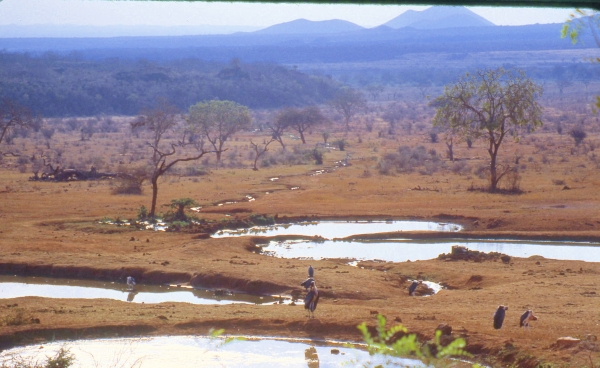
Preparing – the final push
Packing is perhaps a jumpy time for us all. Do we have all we need to take? Does it fit in the suitcases, especially the minimal set that avoids outrageous baggage fees? Make sure you know the baggage limits on all of the flight legs. It’s nice that many countries have higher limits on baggage weight or number and, if you book all through one airline, even a US airline, the higher limits apply the whole way. A practiced packing or two tells us if we’ve got it down. We always pare down what we carry to leave room for the souvenirs we’ll be carrying back. We have been surprised at the last minute. As we were leaving Kenya in 1989, two families of Maasai friend from the Narok and Ngong Hills area gave us stunning shields (now at our own school), truly authentic, one even with a design showing that the man whose it was had killed a lion. Aiee, no time to pack them. Good old Swissair handled it. They wrapped the shields in plastic and promised to put them on top of the other baggage. No need, really; Cape Buffalo hide is tough as, well, buffalo hide. These shields are now at our school, the Las Cruces Academy, in view of all our students, teachers, and visitors.
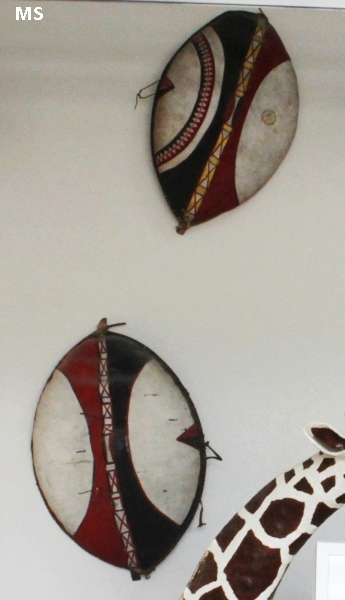
For us the essentials are the cameras, lenses, lens caps, chargers, spare batteries (clean those lenses, clear off those SD cards), the documents, guidebooks, maps, clothes for the weather but not for style (no ballroom dancing for us), kits for cleaning and small repairs of cameras and eyeglasses, spare eyeglasses for Vince, flashlights, meds, melatonin for jet lag, first aid goodies, cell phone charger, toiletries, razor, money, credit cards and ATM cards, copies of reservations and our passports, our Global Entry cards, pens, new diaries with contact info, ready to fill in with the trip memories, earplugs for sleeping on the plane, and reading material to pass the time on looooong flights. Take nothing new, no new camera, without testing it. Let’s include melatonin for resetting our biological clocks after long E-W flights. Also include clothespins and fishing line because we take minimal clothing (shirts, pants, socks, underwear, hats…) and wash them in hotel sinks. That really keeps our weight down. This has led to some episodes. In Nairobi and the Kenyan highlands it’s cool at night and often humid. We learned not to carry denim jeans. They are so cold and damp in the morning! It’s like winter camping in the summer. There was a backspin on that. In Cameroon we were offered a spectacular elephant mask (like these in the British Museum), which is a fabric piece decorated with colored fabric, beads, and cowry shells, all in the shape of an elephant’s face and trunk. The young men just wanted to trade it for our US jeans. Alas, these were our only pants. In hindsight we thought that we should have swapped right there and wrapped whatever around our legs until we could find pants to buy.
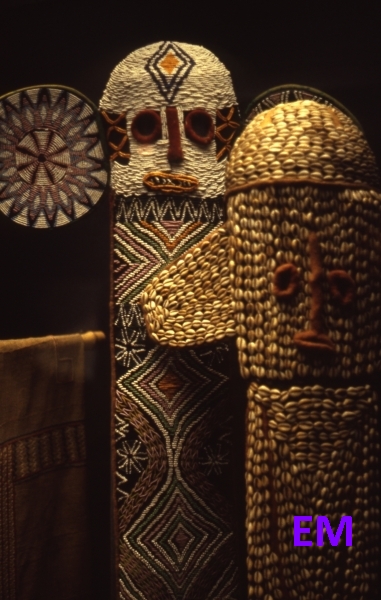
Vince has the short version of the gene for worrying. He’s a born worrier. We take full precautions for our house while we’re away. The ideal case has been having friends or visitors occupy the house while we’re away, providing them full instructions on how everything in the house works, admonitions about locking doors, and emergency contacts for repairs or to reach us. We leave them the car keys, too, to move them if need be or even to use them if we think that’s prudent. Lacking such a person or persons in residence we leave full instructions with friends in printed and electronic form (nowadays).
We’re off! Sending our itinerary to friends and relatives lets them know we’re off for another travel adventure. We’re saying “Bon voyage” to ourselves. The final step is ground transport to the airport. That’s friends or a shuttle or, for trips of less than about 3 weeks, our own car. We find ourselves at the airport, carrying our luggage and stepping toward a new world.
Back home
Our trip doesn’t end when we’re back home again. We feel renewed. We have our memories, photos, souvenirs. Some souvenirs take up a true residence. On one wall are four carved and painted masks from Bali. These masterpieces on high look down on us – the devil Kalalau attempting to swallow the moon, Rama the king, the flying dragon Garuda, and a purple-faced devil. A most elegantly lacquered calligraphy box sits on our coffee table (a crocodile carving from Papua New Guinea, bought in Santa Fe). It’s an object to appreciate for its visual appearance, the cool and smooth feel, the balance of its slight heft. Huge baskets woven by a Turkana woman (that’s her daughter, with David in the basket) and once occupied by David at age 5 are comfortable natural furniture. Books, a dozen or more, join the other 2,000 on our shelves. So do some ephemera – newspapers that capture the way that people think over there, whether their views of America or what sports or businesses or home life items matter to them. A panorama of our living room imparts the sense of it all.
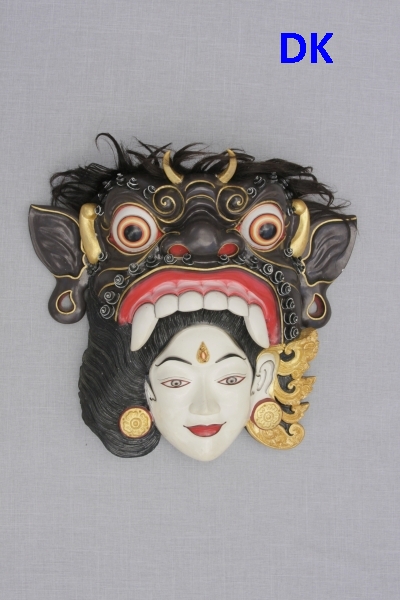
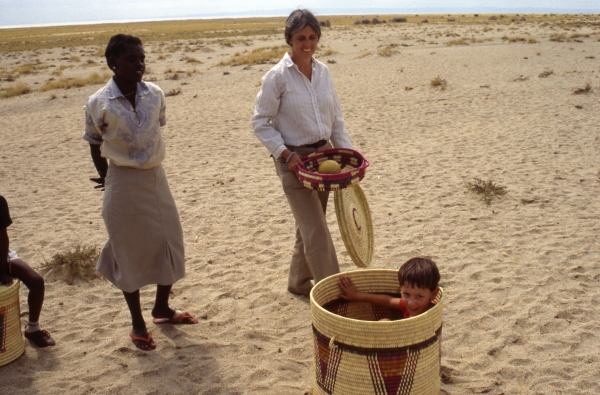

For Vince, especially, photos take center stage. Now that we’ve gone digital we take as four to five thousand images each trip of 3 to 5 weeks. Prior to the oh-so-handy digital imagery, he would develop slides and negative or have the developed, print a number of them, assemble them into shows for friends. Now he downloads them to a desktop computer with a graphic arts screen and reviews every one. That’s reliving the trip, that’s being struck by powerful images, that’s sheer fun. He identifies many, tagging them with fully descriptive names. Some images call out for editing by cropping, rotating, warping, color corrections; it’s a chore he enjoys. The power of computers, and especially of the Total Commander search app, lets us in a moment find that touching or exhilarating or amusing event. We also have nice software, EXIF Date Changer, to put images in the local time if we forgot to change the time on the camera.
There’s all the catching up to do – mail and email, bills, meetings, whatever. Yet the trip is a persistent presence. We recall it with joy and fondness. Australia calls itself the lucky country and we agree. We call ourselves lucky people. We are prepared and diligent, but we are very large measure lucky people.
An Appendix – noteworthy books on travel and cultures
This is a very small selection of our books, covering some particular high points. Books marked with (*) are exceptional to us; some of the books are old and perhaps valuable, hard to buy but perhaps found in libraries. The publishers and years of publication are easy to dig up.
Great travel books, not guides but stellar stories
(*) The Malay Archipelago, by Alfred Russell Wallace – incredible and difficult adventures across Malaysia and Indonesia in the mid-1800s, in search of patterns of life, which led to the theory of evolution
Neither Here nor There; In a Sunburned Country, by Bill Bryson – travel in Australia, with humor ranging from dry to scathing, and hilariously self-deprecating
(*) Ring of Fire, by Lawrence Blair with Lorne Blair – travels on a shoestring to make documentaries of the cultures in Indonesia, to the outermost islands
(*) Archipelago, Gavin Daws and Marty Fujita – the most beautiful images and storytelling about the places traversed by Alfred Russell Wallace in the mid-1850s
Mountain Light, by Galen Rowell – narrative of travel in Tibet, with exceptional images and cultural stories
China, by Alison Bailey et al. (DK, NY – so you can find it among many similarly titled books) – telling images
Strong Brown God: The Story of the Niger River, by Sanche Gramont – ancient kingdoms, explorers intrepid or foolish
(*) The Centre: the Natural History of Australia’s Desert Regions – the exotic nature comes through in great writing and imagery; it makes one want to go there tomorrow; alas, we never got there when we were in Australia six times
First Contact, by Bob Connolly and Robin Anderson – the first Europeans meet the people of Papua New Guinea in the 1930s!
Brazilian Adventure, by Ian Fleming – yes, Fleming; stories of the search for Col. Fawcett, lost while seeking a legendary city in the Amazon
(*) In a Sunburned Country, by Bill Bryson – an eclectic, idiosyncratic book, with laugh-out-loud pieces, a loving picture of Australia
(*) Neither Here nor There, by Bill Bryson – a similarly engaging and often hilarious book about making his way in Europe with no “support”
A Short Walk in the Hindu Kush, by Eric Newby – only a month or so, but evocative of the most trying kinds of camping, mixed with deep sections on cultures and political geography
Great nature books – stories, guidebooks
A Natural History of Australia, by Tim M. Berra
Last Chance to See, by Douglas Adams and Mark Carwardine -the surrealist author and friend see some of the last wild creatures alive
(*) The Variety of Life, by Colin Tudge – it’s deeply scientific while covering the evolution of every kind of organism in a vast story of how we are all related, through some very long chains, on figures that fold out in series
Wild Animals of the World, by Mary Baker and William Bridges – a very old book (1948) that ignited my passion to see the wild animals of Africa; I read it about 500 times
(*) Colors of the Deep, by Jeffrey L. Rotman – coral reef life up close and out of this world (unfortunately nearly so)
(*) Coral Kingdoms, by Carl Roessler – a kindred book
(*) Chameleons, by James Martin and Art Wolfe – a panoply of colors, of course, and a lot of natural history
(*) The Ancestor’s Tale, by Richard Dawkins – not images or natural history of today’s life, but the deep stories of our relatedness, told in the form of Chaucer’s Canterbury Tales
(*) On Human Nature, by Edward O. Wilson – an explanation of who and what we are, derived from an incredible depth of natural history and evolution; upsetting to those who put us apart from nature and deny our family tree going back to bacteria
Krakatoa 1883, the Volcanic Eruption and its Effects, by Tom Simkin and Richard S. Fiske- need we say more? It’s a hefty, large-format paperback
(*) Hummingbirds of the Caribbean, by Quesada Tyrrell and Robert A. Tyrrell – photos of unbelievable beauty, accompanied by text packed with great information about natural history to physiology to feeding to ecology
Great books about cultures, old and new
The Rediscovery of Ancient Egypt, by Peter A. Clayton – reproductions of classic, dreamworthy watercolors imbedded in a story line
Mysteries of Ancient Egypt, by Lorna Oakes and Lucia Gahlin – there are many coffee table books about Egypt; this one is so well done, with writing in depth
The Lost Cities of Africa, by Basil Davidson – noble and sad stories
The Flame Trees of Thika, by Elspeth Huxley – a culturally sensitive set of stories by a young English girl in colonial Kenya; made into a BBC TV series worth watching on DVDs
Royal Art of Benin, by the Metropolitan Museum of Art – bronze castings of exquisite form, culturally charged
(*) The Dance, Art and Ritual of Africa, by Michel Muet – eye-popping color imagery from the intact village life
(*) Africa Adorned, by Angel Fisher -jewelry and clothing to leave you in awe
(*) Ndebele, by Margaret Courtney-Clarke – the vivid decorations in primary colors of this marginalized people of South Africa
I, the Aboriginal, by Douglas Lockwood and Ainslee Roberts – the whole story of an original Australian who joined the white culture but kept his own
Sacred Places in Australia, by James Cowan and Colin Beard – a bit too missionary, but presenting the ancient art and practice held in stone
Monuments of the Incas, by John Hemming and Edward Ramsey – Machu Picchu, and far more, with fine B&W photos and deep historical detail
(*) The Trans-Australian Wonderland, by A. G. Bolan – a railroad stationmaster in isolated Ooldea along the Sydney to Perth railroad, with natural history and very empathetic recounting of the Aboriginal people around him
Ethnic Minorities in Vietnam, by Dang Nghiem Van, Chu Thai Son, and Luu Hung – there are 51 minorities with fascinating stories, customs, and dress; we had rewarding homestays with 5
(*) A Proper Woman, by Thavry Than – survival and triumph in the chaotic and vicious days of the Khmer Rouge and US invasion
(*) Les Papous, by Malcolm Kirk – the amazing body decorations of the New Guinea Highlanders; we bought a ceremonial slate axe from the man whom we later found on page 54!
Splendors of Imperial Japan, by Joe Earle – art of all kinds, depicted elegantly
(*) Ethnic Jewelry, by Michel Butor and Pierre-Alain Ferrazzini – a jaw-dropping large-format book
Oriental Treasures in the Mediterranean, by Henri Stierlin – Islamic architecture is unmatched
(*) The Golden Spruce, by John Vaillant – an incomparable book, weaving together the story of guerilla environmentalism, the culture of the people of Haida Gwaii, European traders, and mega-corporations
Stolen Continents, by Ronald Wright – yep, our North America all the way to South America
(*) Ancient Lands, Ancestral Places, by Paul Logsdon – photos, many aerial, of the ancient Pueblo sites, evocative of the way of life and the swirling changes engulfing the people
Japan Design, eds. Tanaka Ikko and Koike Kazuke – modern Japanese work, from practical to artistic, or, really, both
(*) The Scrutable East, by Robert Trumbull – had political leaders in the US and Europe understood what this journalist found in his life in Asia everyone would have been spared the immense trauma of 20th-century wars in Asia
Head Hunting in the Solomon Islands, by Caroline Mytinger – a woman watercolorist and friend range far and wide to capture portraits
All of he Culture Shock X books, such as Culture Shock France – how to be there and not be embarrassed
Aboriginal Art, by Wally Caruna – contemporary creations from an ancient culture
(*) Ichikawa Ennosuke IV, by Nagatsuka Seishi – photos of a famed kabuki actor in many roles and costumes. In Japanese. We bought it in Tokyo at the kabuki theater. ISBN 978-4-7562-4740-7
(*) Kabuki: A Guide to the Kabuki Costumes, by the Shochiku Kabuki Division – Fantastic images of costumes and sets. If only I could find an ISBN number! It’s in both Japanese and English. NII Bibliography ID (NCID) BB22912399. Available from booksellers online.
(*) Made in Japan, by Shinya Maezaki and Masako Yamamoto – a wealth of detail on ancient crafts still practiced in Japan, with beautiful pictures and engaging explanations of the processes
Great guide books
East Africa: A Travel Guide, by Alan Magary and Kerstin Fraser Magary – outdated, 1975, but this lit our fire to be there
… and almost any guidebook on Kenya, a country to immerse yourself in
(*) Tropical Plants of Costa Rica, by Willow Zuchowski – never have we seen a book filled with such incredible information and fine color photos
(*) Ancient Angkor, by Michael Freeman and Clause Jacques – we bought this from a poor vendor at Angkor; the images burn themselves into your mind
(*) Atlas Obscura, by Joshua Foer, Dylan Thuras, and Ella Morton – about 1,000 offbeat places around the world; we must go offbeat a lot, as we have been to 113 of them
(*) Sulawesi, Island Crossroads of Indonesia, eds. Toby Alice Volkman and Ian Caldwell – people, landscapes, fauna and flora in beguiling images and text
(*) Cameroon Today, by Anne Debel – dated, now, but it inspired us to go to Cameroon in 1980; the pictures are just like what we saw, and far more
All the Lonely Planet guidebooks
Great books of several other types
(*) Science and Scientists in the Netherlands Easts Indies, eds. Pieter Honig and Frans Verdoorn – incredible depth of work, evocative of the conditions of Indonesia
(*) Australia the Untamed Land, by Richard Waldendorp – Spectacular pictures, many aerial, giving an overwhelming sense of the vastness of wild land and sea
(*) The Times Atlas of the World, by the London Times – a huge book to lose oneself in for hours
Perfect Spy, by Larry Berman – the story of Pham Xuan An, hired by the US but a singularly effective spy for the Vietnamese, respected by friend and foe alike
Album Mondial de al Peinture Naïve, by Max Fourny – naïve paintings to make one dream
(*) Bill Reid, by Doris Shadbolt – stunning works of Haida-style art by a man who rediscovered his heritage, with both stories intertwined
(*) Susan Point, Coast Salish Artist, ed. Gary Wyatt, by Michael Kew et al. – never have we seen work in so many media that take your breath away
Northern Images, by Gunther Deichmann and Tim Cope – the landscapes, the people, the wild elements of the Top End of Australia
(*) Earth From Above, 365 Days, by Jan Aarhus-Bertrand, one of several in a series – aerial imagery around the world, with biting commentary on human activities harming the planet
The Asian Art Museum of San Francisco, ed. Lorna Price, photos by Kaz Tsuruta – excellent photos and illuminating text, on art from the Near East to Japan



